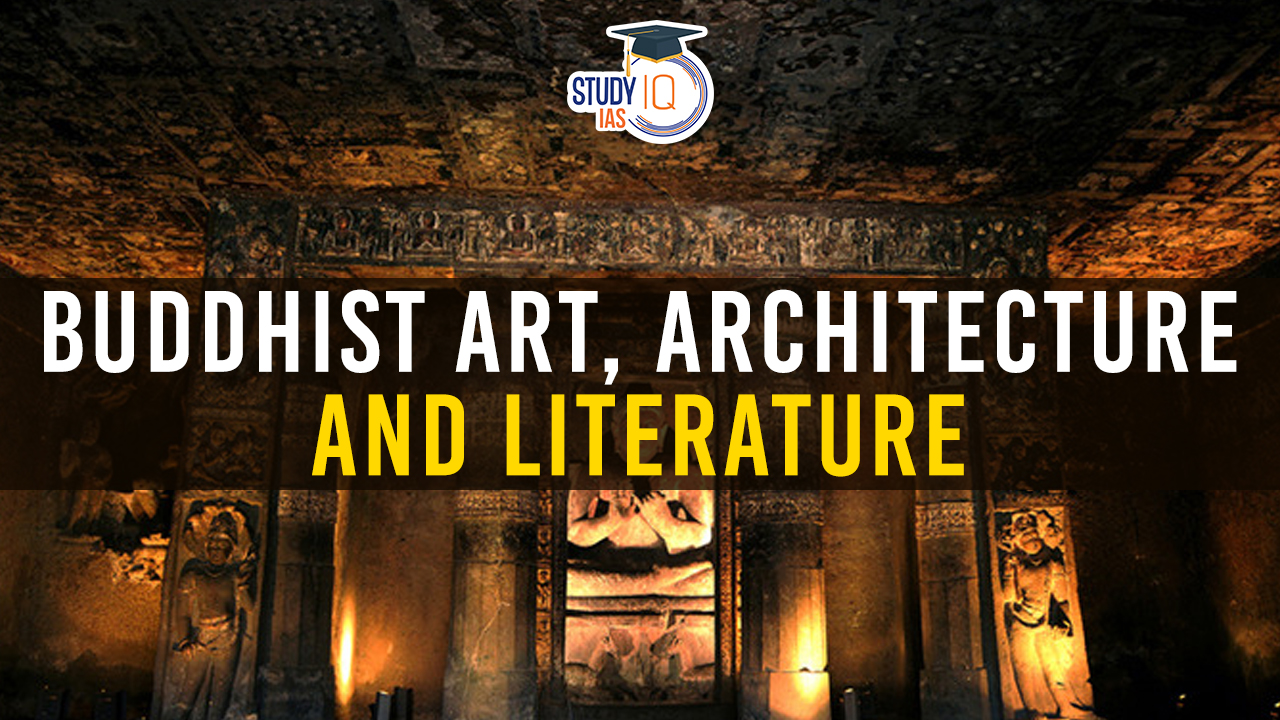Table of Contents
Buddhist art, architecture, and literature collectively form a profound cultural and spiritual legacy. They not only preserve the teachings of Buddhism but also serve as bridges between different cultures, fostering a shared appreciation for wisdom, compassion, and artistic expression. The diversity within these artistic and literary forms reflects the dynamic and inclusive nature of Buddhism as it spread across different regions and periods.
Buddhist Art, Architecture and Literature
Buddhist Art
Sculpture
Buddhist sculpture is a rich and varied form of artistic expression, prominently featuring statues of the Buddha and Bodhisattvas. The statues often depict the Buddha in various poses, each carrying symbolic meaning. Bodhisattvas, representing compassion and enlightenment, are also common subjects. The sculptures are characterized by a sense of serenity and spiritual grace. Different regions have developed unique stylistic variations, such as the classical elegance of Indian sculptures or the more stylized forms found in East Asian traditions.
Painting
Buddhist paintings are found in diverse settings, including caitya halls, caves, and on portable scrolls. Notable examples include the Ajanta and Ellora cave paintings in India, showcasing intricate depictions of Buddhist stories. Thangka paintings, especially in Tibetan Buddhism, are renowned for their vibrant colors and detailed iconography. These paintings often serve as visual aids for meditation and convey spiritual teachings.
Architecture
Buddhist architecture encompasses stupas, viharas, and temples. Stupas, like the iconic Sanchi Stupa in India, often enshrine relics of the Buddha. The architectural style of Gandhara, influenced by Greco-Roman art, is distinctive. Temples and viharas showcase intricate carvings and designs, reflecting the cultural and regional influences. Pagodas in East Asian countries, with their tiered structures, exemplify the evolution of Buddhist architectural forms.
Terracotta and Ivory Carvings
Terracotta figures and ivory carvings are expressions of Buddhist art known for their intricate details. These art forms often depict Buddha and Bodhisattvas in human form, radiating a sense of tranquility and bliss. The use of different materials adds a tactile dimension to the artistic experience.
Inscriptions
Inscriptions on Buddhist monuments, often by rulers or devotees, convey messages of peace, universal well-being, and adherence to ethical conduct. These inscriptions, whether in Brahmi characters or later scripts, typically commence with homage to the Buddha and serve as guides for righteous living.
Buddhist Literature
Canonical Texts
Buddhist literature is vast and diverse, comprising canonical texts in languages like Pali and Sanskrit. These texts include the Tripitaka (three baskets) and various Sutras. They cover biographies of the Buddha, teachings, philosophical discourse, moral guidelines, and eschatological concepts.
Themes
Jataka tales, recounting the Buddha’s past lives, emphasize ethical conduct and virtuous living. The spread of Buddhism led to diverse literary themes across different cultures. Modern Buddhist literature, produced globally, often takes the form of expository writings, explaining and interpreting Buddhist concepts for contemporary audiences.
Catalogs and Histories
Catalogs like those of Tanjore, Gilgit, and bibliographic histories like Taranatha provide classifications and insights into Buddhist literature. Efforts to restore lost literature, whether through preservation or translation, are considered valuable tasks for preserving cultural heritage.
Significance
Expression of Ideals
Buddhist art, architecture, and literature collectively serve as vehicles for expressing and embodying Buddhist ideals. They visually and narratively represent the teachings of the Buddha, offering tangible and accessible means for understanding and internalizing spiritual concepts.
Cultural Integration
As Buddhism spread across diverse regions, its artistic forms adapted and integrated with local cultures. This cultural integration resulted in a rich tapestry of regional variations, demonstrating the flexibility of Buddhist art and literature.
Spiritual Enlightenment
Forms of artistic expression, including music, dance, and drama, contribute to the spiritual enlightenment of practitioners. These art forms are not merely aesthetic but are designed to elevate the mind, fostering tranquility and receptivity to divine grace.
Buddhist Art, Architecture and Literature UPSC
Buddhist art, architecture, and literature constitute a profound cultural and spiritual legacy, preserving and embodying the teachings of Buddhism. Serving as bridges between diverse cultures, they foster a shared appreciation for wisdom, compassion, and artistic expression. From the rich sculptures depicting Buddha and Bodhisattvas to intricate paintings like those in Ajanta, diverse expressions reflect Buddhism’s dynamic and inclusive nature. Architectural marvels such as stupas and pagodas showcase regional influences. Terracotta and ivory carvings add tactile dimensions, while inscriptions convey ethical guidance. In literature, canonical texts and modern writings cover diverse themes. Collectively, these forms express ideals, integrate with diverse cultures, and contribute to spiritual enlightenment.


 Daily Quiz 05 July 2025
Daily Quiz 05 July 2025
 SSC MTS Apply Online for 1075 Posts – ...
SSC MTS Apply Online for 1075 Posts – ...
 Dynamic Pricing: What It Is and Why It's...
Dynamic Pricing: What It Is and Why It's...





















